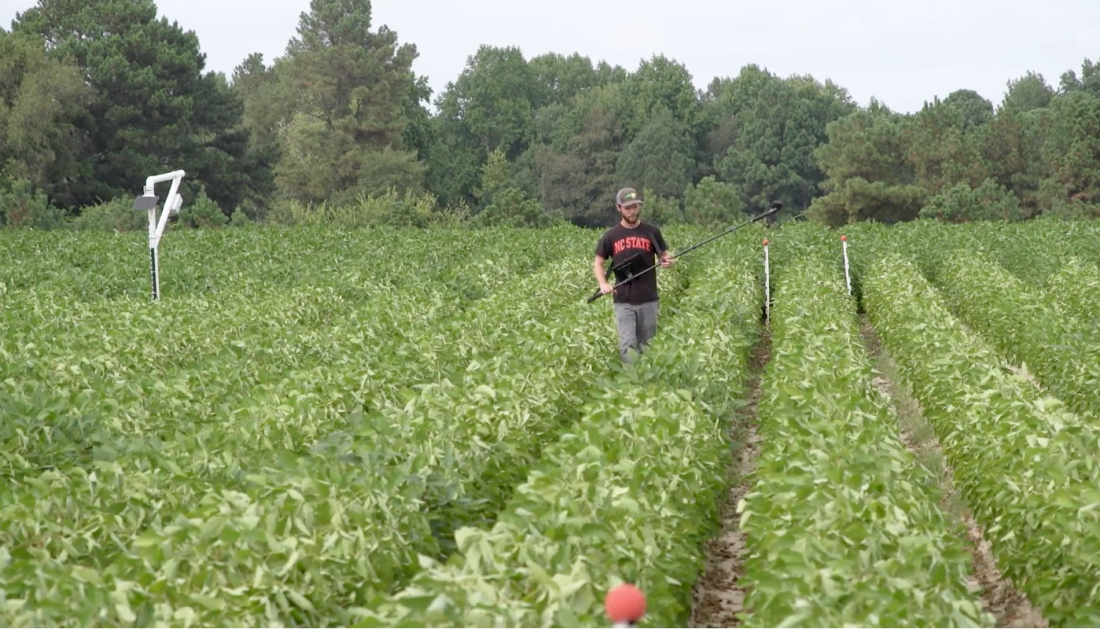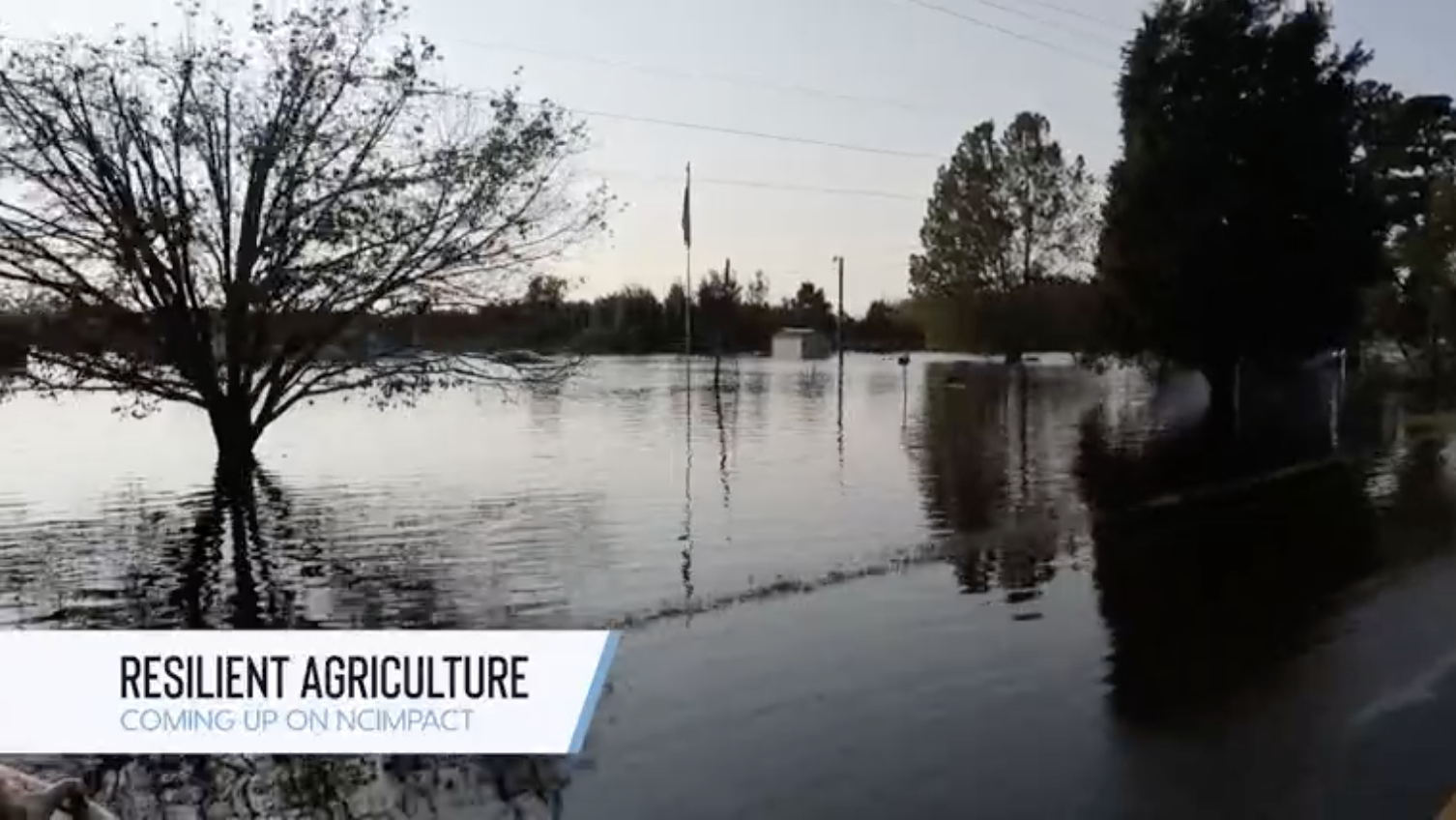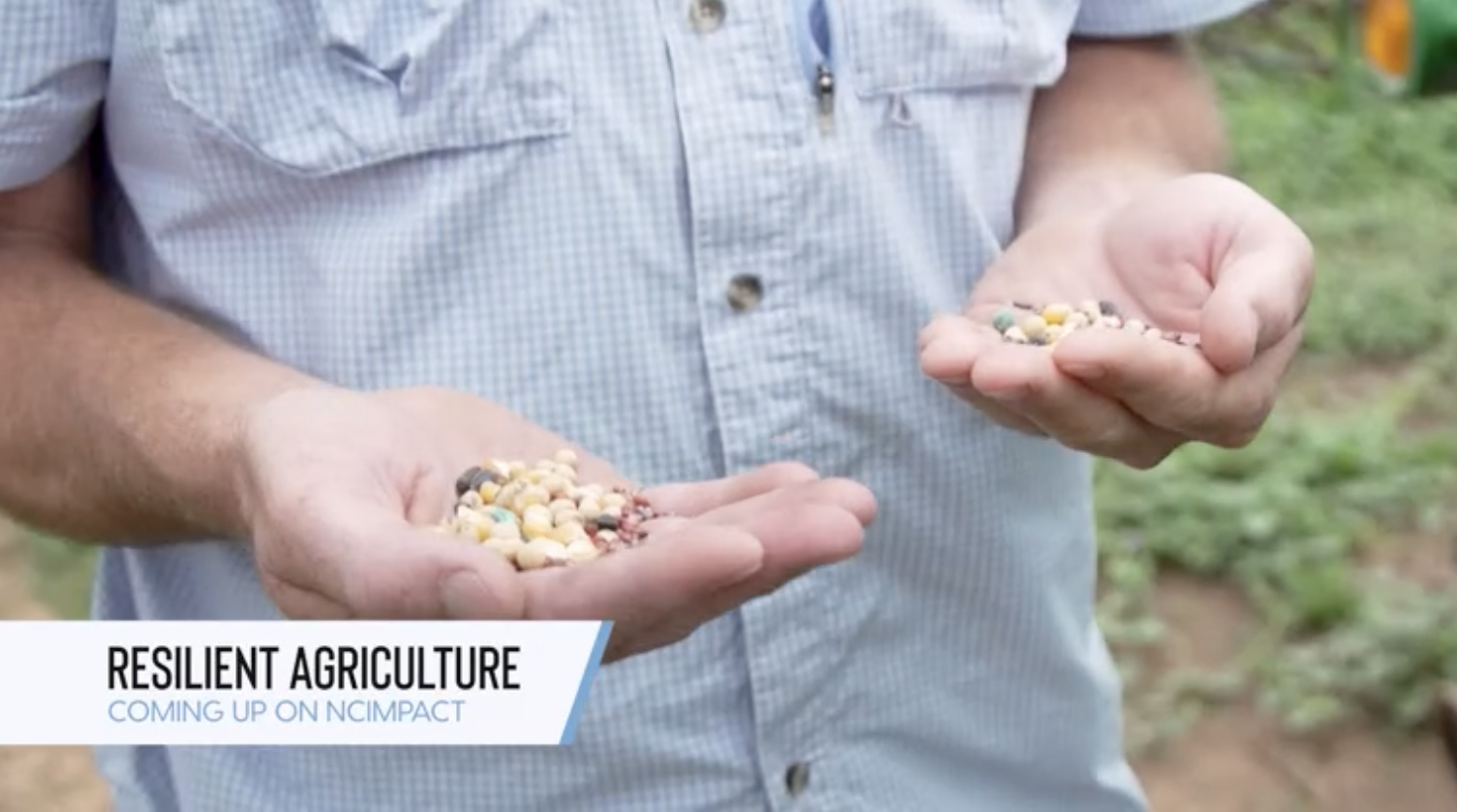Resilient Agriculture
The agriculture industry is at risk as farmers experience issues related to increased rates of rainfall and droughts, and increased frequency of extreme weather events, such as hurricanes, which cause flooding and other hazards. All of these weather-related issues threaten to decrease crop yields, thus increasing economic losses and hardships for farmers. Many farmers find benefits of incorporating resilient agriculture techniques to mitigate these risks.

The Problem
In North Carolina, agriculture plays an important role in the state’s economy, representing a $92 billion dollar industry, with the state leading the nation in poultry, tobacco, and hog production. Moreover, forestry and its related industries provided $20.8 billion dollars to the state’s economy in 2018, totaling almost 4 percent of North Carolina’s gross statewide product. The industry is at risk, however, as farmers experience issues related to increased rates of rainfall and droughts, and increased frequency of extreme weather events, such as hurricanes, which cause flooding and other hazards. All of these weather-related issues threaten to decrease crop yields, thus increasing economic losses and hardships for farmers.
These negative effects occurred in recent events, such as Hurricanes Matthew and Florence, the latter of which caused $1 billion dollars in crop and livestock losses and $50 million in forestry losses. For an individual example, Davon Goodwin, a veteran-turned-farmer, saw 40 percent of his crops destroyed by Hurricane Matthew in 2016. Rising temperatures and increased droughts make it tougher to raise cattle, sheep, and goats, given that those animals rely on abundant grasses for food. These conditions cause farmers to purchase more hay to deal with the lack of grass, adding another expense to the farming industry. As average and extreme temperatures continue to rise over the coming decades, agricultural and forestry workers will be at personal risk, as people in these industries currently account for 10 to 20 percent of all heat-related deaths and illnesses in the nation. Farmers now must spend tens of thousands of dollars annually on resilience efforts, potentially stretching their budgets even further.
The Solution
Many farmers have already seen benefits of incorporating resilient agriculture techniques. After Hurricane Florence, some farmers began working on their land around a month ahead of schedule because they had been practicing good soil health management for years, specifically the use of cover crops, which have been proven to build and fortify soil structure. A partnership between N.C. State University and farmers in Wayne County resulted in the use of cover crops on local farms to ensure that local roads would have a lower chance of flooding, which would ensure greater hospital access during extreme weather events. Farmers have also begun to use resilient livestock by raising heritage breeds that are bred to be resistant to extreme weather conditions. Farmers also are working with agencies, such as the Natural Resources Conservation Service, which offers incentives for cover crops, and N.C. State extension offices, with one for every North Carolina county.
An important aspect of promoting sustainable agriculture is instilling a culture of adaptation among farmers and farming communities. Many North Carolina farmers have been working on their land for multiple generations and may be unfamiliar with or hesitant to change their practices. Pork Ryne, an international farming educator and a pig farmer, shared that he starts conversations with farmers by recognizing the longevity and effectiveness of their typical farming practices while alleviating any existing anxieties related to changes in farming. He recommends that farmers implement sustainable practices on a small portion of their land, usually around 5 to 10 acres, and then gradually implement these practices across the rest of the farm.
The Players
Beginning in 1999, Central Carolina Community College became the first community college in the nation to offer an associate degree in sustainable agriculture. Robin Kohanowich, the lead instructor of the program, says that its curriculum focuses on sustainable farming practices with an entrepreneurial lens, as students learn how to use organic and regenerative practices that improve soil and plant health. With most of the hands-on training taking place on the campus’s certified organic farm, students learn not only how to run their own farm, but also how to adapt to current climate challenges. The program uses local and regional partnerships to its advantage as students travel to local farms to learn about the benefits and techniques of sustainable agriculture practices. The program aligns with North Carolina A&T University so students have the option to enroll in the community college’s sustainable agriculture program for two years and then finish their bachelor degree in NC A&T’s agricultural education program.
N.C. State’s Precision Sustainable Agricultural Team partners with local farms to provide technology and data designed to give farmers real-time data on the health and resiliency of their farm. In one instance, the team works with farmers in Stanly County to investigate how cover crops could have an economic and environmental benefit for the area. Professor Chris Reborg-Horton sees this strategy as part of another agricultural revolution based on technology, data, and robotics, with an eye for climate change adaptation. The partnerships use online and cloud-based systems with low-cost technologies in order to improve the performance, profitability, and sustainability of farms across the state. Meanwhile, farmers in Stanly County collaborated with farmers in nearby Anson and Montgomery counties to form the Upper Pee Dee Farm and Food Council, providing a regional support network designed to create economical and sustainable farm systems.
The Promise
The future of agriculture in North Carolina may hinge upon an increased connection between the agricultural industry and local communities, as well as a reliance on data-driven technology. Farmers want to be part of sustainable farming solutions, so it is vital for communities to work with them to assist with hazard mitigation and advocate for governmental partnerships and grants that promote sustainability. These potential alliances can also work to interpret and act upon climate-related risks in the planning and investment decisions made by farms and communities. A potential policy that could be implemented would be to install natural infrastructure, such as wetlands, forests, and stream buffers, on farmland not currently in production, which would give farmers a more economical and efficient use of their land and protect local communities from flooding during hazardous weather. With modern-day farming being increasingly data-driven, there is potential to incorporate more technology into farm management decisions. For example, farmers could have access to real-time metrics such as soil moisture so that they are able to accurately determine their irrigation rates.
A collaborative report produced by N.C. State, RTI International, and the Environmental Defense Fund identifies ten steps for farmers and their partner organizations to use going forward. The opening tactics involve identifying how relevant industries and assets will be affected by different climate hazards and then identifying solutions by evaluating how they affect or are affected by these hazards. The plan then advocates for building partnerships and taking advantage of effective strategies used across the nation while continuing to implement and refine state-level resilience plans. The plan determines that it would be effective to incentivize resilient farming practices that provide multiple benefits and support academic research that seeks to discover new strategies for sustainable farming.



